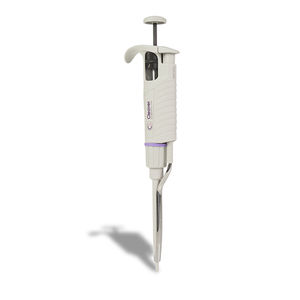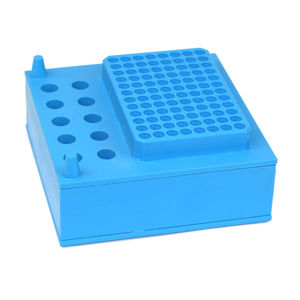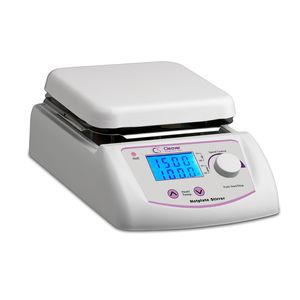
- Laboratory
- Molecular biology
- Peltier effect thermal cycler
- Cleaver Scientific

- Company
- Products
- Catalogs
- News & Trends
- Exhibitions
Peltier effect thermal cycler GTC96 series96-well
Add to favorites
Compare this product
fo_shop_gate_exact_title
Characteristics
- Technology
- Peltier effect
- Number of wells
- 96-well
Description
Compatible with 96-well plates, 0.2ml tubes and tube strips
Protocol optimization selectable from 1 to 24°C across the entire temperature control range from 4-99°C
Precision temperature control increases both speed and efficiency
OVERVIEW
Faster and with enhanced features, the new GTC96S advanced thermal cycler delivers exceptional performance at an affordable price. An improved protocol optimisation process utilises Flexible Temperature technology to segregate the 96-well plate into six discrete (4×4-well) temperature zones, made easily distinguishable by blue and black squares.
Temperature selection is no longer automated and is entirely in the hands of the operator over a 24°C advanced range, anywhere between 4 and 96°C. This enables the operator to optimise PCR by testing 6 different temperatures simultaneously in just one thermal cycler run. This is ideal for Genotyping work. With heating and cooling rates of 5°C/s and 3.5°C/s respectively, the precision temperature control of the GTC96S minimises temperature overshooting and undershooting between individual stages within each PCR cycle, resulting in faster run times and greater efficiency.
Programming is both quick and simple through a large user-friendly interface, while pre-programmed methods for Optimisation, Touchdown and Time Increments make set-up obvious even to first time users.
Catalogs
Related Searches
- Molecular biology reagent kit
- Reagent medium reagent kit
- PCR system
- Nucleic acid reagent kit
- Electrophoresis reagent kit
- 96-well PCR system
- Electrophoresis system
- Benchtop electrophoresis system
- Agarose gel reagent kit
- Transilluminator
- Gel reader
- Electrophoresis tank
- Electrophoresis transilluminator
- Gel documentation system with integrated camera
- UV transilluminator
- Compact electrophoresis system
- Protein electrophoresis system
- LED transilluminator
- Capillary electrophoresis system
- DNA gel documentation system
*Prices are pre-tax. They exclude delivery charges and customs duties and do not include additional charges for installation or activation options. Prices are indicative only and may vary by country, with changes to the cost of raw materials and exchange rates.




















